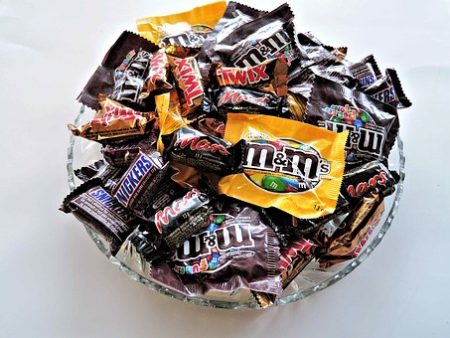 Editor’s Note: This article originally appeared in The Conversation Canada and the National Post.
Editor’s Note: This article originally appeared in The Conversation Canada and the National Post.
For many people, Halloween means dressing their kids up like cute little superheroes. Unfortunately, the holiday can also stress many parents as they try to manage the deluge of candy that children bring home from trick-or-treating.
Over-consumption of sugary treats on a single day is of no great concern for health. Sustained over-consumption can, however, lead to a number of negative health effects in children.
The good news is that there are several strategies parents can use to get rid of the candy stash and reduce the impact of what is eaten.
The terrifying effects of sugar
Sugary treats can have a very negative impact on dental health. Research has consistently shown that a high sugar intake is associated with increased risk of dental caries (cavities) in children. Sugar is the preferred food for harmful bacteria in the mouth that produce acids, which can destroy tooth enamel and lead to cavities.
A high intake of sugar is also associated with an increased risk of chronic disease later in life, including heart disease and Type 2 diabetes.
Eating sugar leads to a rise in glucose (sugar) in the blood. This rise has been associated with changes to the level of certain fats in the blood, specifically an increase in triglycerides and a decrease in high-density-lipoproteins (HDL) cholesterol. This can lead to higher risk of heart disease.
A high intake of sugar can also lead to excess weight gain, which is linked to both heart disease and diabetes risk.
That’s the bad news. So what can parents do about it?

Eat the eyeballs after dinner
The body’s response to sugar can be altered by a number of factors, including the foods that are eaten with the sugary treat. Eating a sugary treat along with foods high in protein or fibre can result in a smaller rise in blood sugar.
To reduce their child’s spike in blood sugar, parents should resist the urge to pack a Halloween treat in their children’s lunch where they will be unable to control what is eaten with it. Instead, parents can allow their children a treat after the dinner meal, where the children can be more closely monitored. If followed by a good teeth brushing, parents can also reduce their child’s risk of cavities.
Halloween can serve as a time for parents to help their children learn about balance in their diet and how to become discerning eaters in our current food environment.
As Dr. Sara Kirk aptly outlines in her recent article on the rise of childhood obesity, our current food environment serves up substantially more opportunities for unhealthy food choices versus healthy ones.
While we advocate for change in the food environment, the goal is for children to enjoy food, including sugary Halloween treats, in the context of a healthy, balanced diet. Parents can help kids to understand that sugary treats do not provide us with the nutrients and energy we need to grow and stay healthy; therefore we need to enjoy them in smaller amounts.
Kids can also be encouraged to think about which treats they enjoy the most and which ones will they eat just because they are there.
Call in the Switch Witch
Parents of younger children often find they can toss the majority of treats after a week or two as their children lose interest, or even forget about the stash.
Older children may want to weigh their treats and “sell” them back to their parents for a reasonable price per pound.
Other parents implement the Switch Witch. This benevolent helper can visit children as they sleep, trading the big bag of candy they have left out for her — for a small prize.
The World Health Organization and the Heart and Stroke Foundation recommend that kids’ total intake of free sugars (defined as sugar that is added to foods, plus sugars naturally present in honey, syrups and fruit juices) not exceed 10 per cent of total daily calorie intake. For most children, this works out to about four to five teaspoons of free sugar per day.
While kids will certainly overshoot these recommendations on Halloween, it’s their sugar intake on the other 364 days that we’re hoping will hit the mark.